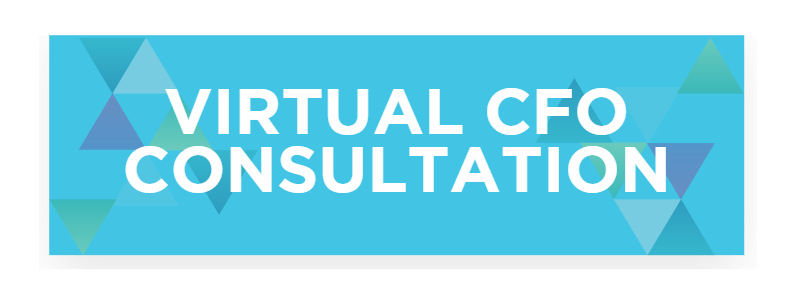No one can resist a good alliteration, it seems, and quiet quitting is no exception. All summer long, top publications–inspired by a tiktok trend–have declared a new workplace epidemic: no one is hustling; workers everywhere are slinking back into the status quo.
So what is an employer to do in the face of quiet quitting? In this current labor landscape, a bad cop ‘stick’ approach is a no-go. And with signs of a recession peeking around the corner, a ‘carrot’ approach might not be ideal–in fact, companies are currently scaling back on the nice-to-haves, like free laundry services.
But even a perk-heavy approach might miss the mark.
The pandemic shook up the workforce, forcing people to take a hard look at their values. When it came time to re-evaluate their work-life balance, many workers took a hard look and decided their employer’s values didn’t line up with their personal non-negotiables. For the first time ever, I would hear people turn down a job offer or leave the company because they wanted to do a complete 180 with their life. For those workers, free laundry services are not the thing that would make them go the extra mile.
“Forget Free Coffee,” the New York Times writes, “What Matters is if Workers Feel Returning is Worth it.”.png?width=622&height=350&name=person_holding_out_message_custom_8748233%20(2).png)
If you’re having a problem with quiet quitting, you’re not going to cure it with a wellness seminar. You’re going to want to start with an examination of your workplace culture to see how you’re supporting employee wellness 360 degrees, from their daily schedule to their long-term career growth to the way they are managed by their team leaders.
Here’s what that might look like.
Don’t treat flexibility as a perk. It’s a value.
Jobs today are less sticky. There’s no stigma to changing careers frequently. In fact, it’s expected–and often considered the easiest, fastest way to advance, rather than grinding at your current job and hoping for a raise that reflects all that extra effort.
Even before the pandemic, Summit was responding to changes in the culture of the accounting industry: young people coming out of college didn’t want to put in 80-hour weeks during tax season. To keep our pipeline full of the best and the brightest, we had to come up with a different approach to accounting–not try to convince young accountants to get on board with the old way of doing things.
Part of that commitment to changing the accounting industry is our flexibility–one of the parts of Summit’s culture that our employees appreciate most. The flexibility that comes with remote work is not a perk, it’s a part of who we are as a company: we trust our employees know best how to get their work done–and that includes deciding when and where. We know they’ll rise to the occasion, regardless of where their workstation is located or what time of day they log on.
If you’ve got an employee whose true passion lies outside their work identity but is perfectly wonderful during the time you’ve got them, that presents an opportunity. When we spoke to leadership adviser, Chris Williams, he shared his belief that a great leader is tuned into the needs of every person on their team. “What you need to do as a leader is make sure you recognize that and when they say I've got to leave early because I need to go do something. You say, ‘Sure sounds great,’ and you support them.”
We were ahead of the curve when we became fully distributed, but now that remote work has reached the mainstream, we increasingly see new candidates interested in Summit because of the pandemic reshuffling.
We've got people who joined our team because during the pandemic they realized, “I really do want to live close to my family so my kids can grow up with grandparents,” or “I want to live in a city that's closer to activities or where people are more politically aligned with me.”
Train your managers to engage with each team member on their own terms
It takes all kinds of employees to make a company. As devoted as many of your team members may be, what do you do about the ones who are just showing up, putting in their hours, and then sprinting off to their true passion on evenings and weekends? (You know, the quiet quitters…)
The fact of the matter is, these employees are doing their job. So the real question is, does your management know how to engage these team members on their terms? In our conversation, Williams shared how important it is to personalize interactions, for example, recognizing how different team members respond to feedback: the same gentle feedback that might help a nervous rookie might irritate a seasoned veteran. To make this possible, however, you’ll need to be sure to keep teams small enough so that the manager isn’t spending 100% of their time customizing their interactions (no more than six to eight direct reports).
You’ll also need to support your managers, by providing the kind of customized one-on-one coaching that helps them develop the necessary people skills–whether that’s in-house with your HR department as we do at Summit or by bringing in outside consultants. Still, you can have people go through as many exercises as you want–the real way for trust to form between managers and their team is by going through hard things together, being vulnerable and coming out on the other side.
Hire with a five-to-ten-year timeline
Your HR department can do a lot of work today to make sure you’re not setting yourself up for a wave of quiet quitting five years down the line if they hire the kind of people who will be able to grow into managers.
When we hire with a short-term mindset, we’re looking at their technical contribution, but if an employee you hire today is still at the company in five-ten years and still growing, chances are, they're going to be a people leader. Over time, their technical skills will become less important day-to-day, and the people skills will be the heaviest lift if they want to keep growing in the footprint of their role.
Keep that 10-year perspective in mind, when it comes to recruiting, onboarding and training staff. Think about: “Who are the types of team members that we can develop into really effective people leaders, in addition to people who can do their job really well?”
It takes experience to build deep trust but just a few weeks to identify the potential
When your senior leaders are really connecting with their team, they’re showing their ability to be vulnerable, so more junior members can come to them and be open with the new challenges they’re facing. When a senior leader can drop the expert persona and admit, “Yeah, I used to struggle with that myself; this is what helped,” that’s when you start a productive dialogue.
Although it usually takes going through a significant challenge with a team before you feel that deep bond, it should only take a few weeks to establish the kind of rapport that allows for those honest insights and tough conversations. If you feel like your senior leader isn’t giving you that open access, you may have to put somebody back on their heels, not in an aggressive way but just to say, “Hey, I can tell that this is kind of like a rehearsed answer. Give me real advice. Tell me about when this fell apart before, because I don't need the polished answer. I'm not trying to take your job today. I'm trying to learn from you.”
If you’re having a problem with George Costanza-style employees napping under their desks, it won’t be an overnight fix. But the alliteration of the day doesn’t need to keep you up at night if your company is willing to put in the work where it counts: your culture.
.png?width=120&height=77&name=Summit-Virtual-CFO_color_rgb%20(1).png)













